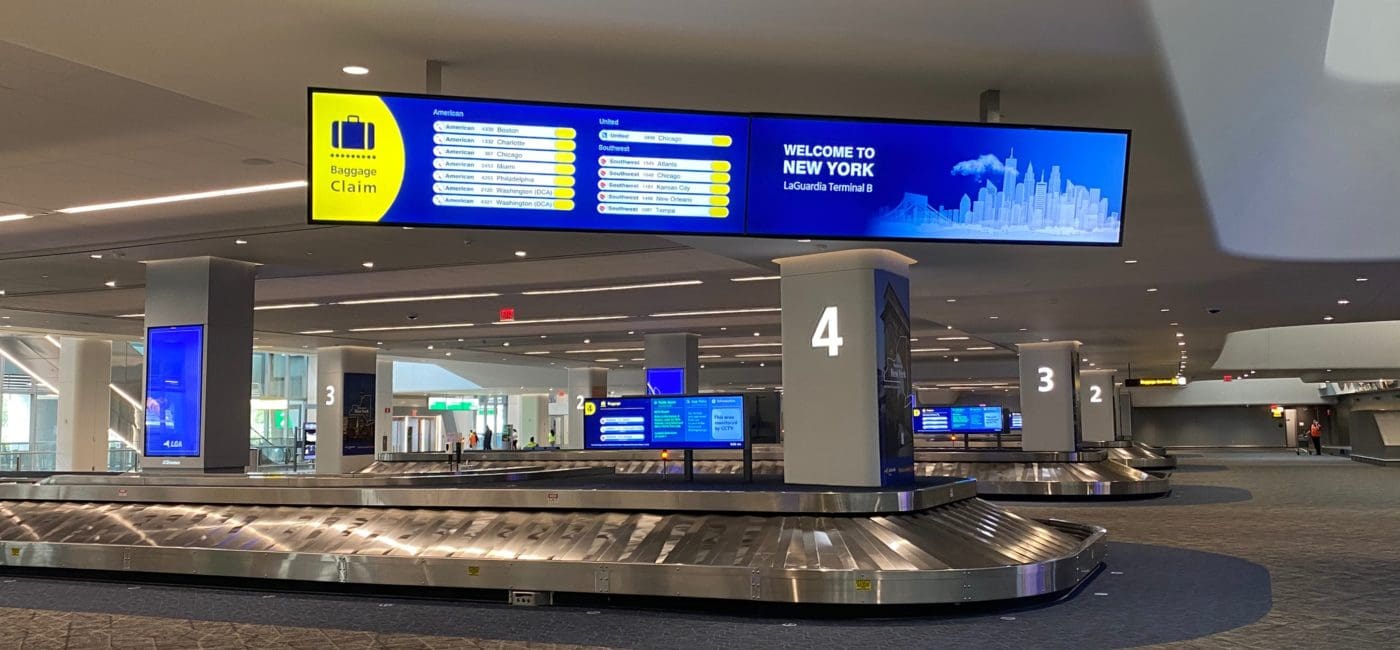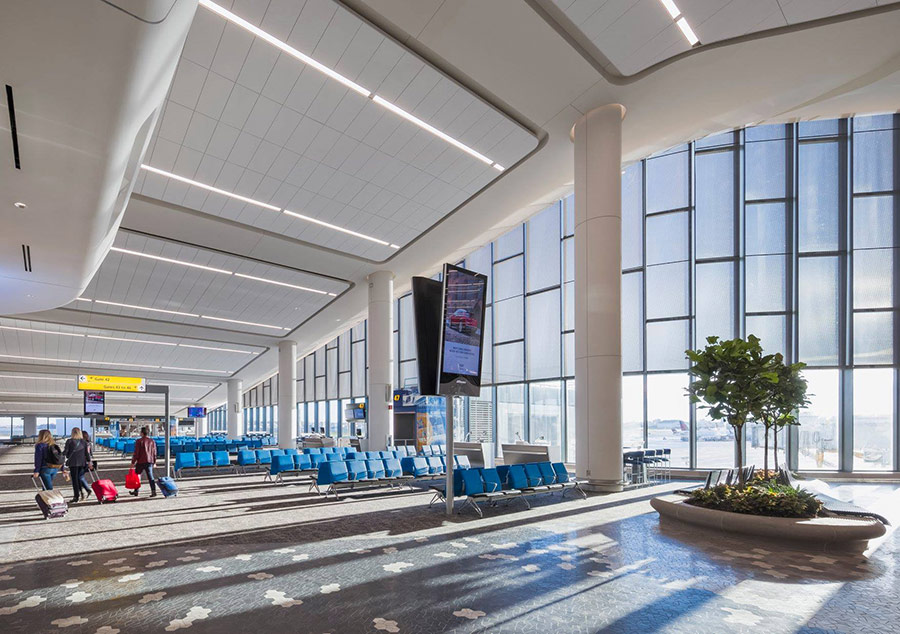

By July 1938, the WPA employed 7,800 workers on the project, and workers were expanding the airport site through land reclamation. The airport was originally projected to cost $15 million and be completed in time for the opening of the 1939 New York World's Fair. Roosevelt approved plans for the airport on September 3, 1937, and La Guardia participated in a groundbreaking ceremony for the airport six days later. The Works Progress Administration (WPA) would provide federal funding for the project. The seaplane and land-plane terminals, both designed by the firm of Delano & Aldrich, would operate independently of each other. A baggage check, customs and immigration offices, an air traffic control tower, and various other offices would be centered around a main waiting room, and there would be access ramps for seaplane passengers. The administrative building was to be a circular brick-and-steel edifice measuring 38 feet (12 m) tall and about 136 feet (41 m) across. The seaplane terminal, to be known as the Marine Air Terminal, was to contain four hangars, an administrative building, and a machine shop. The plans included a terminal for seaplanes along Bowery Bay, on the western side of the airport, as well as a terminal for land planes along Flushing Bay, on the eastern side. La Guardia's administration presented plans for a renovation of North Beach Airport (now LaGuardia Airport) in August 1937. The city government leased North Beach Airport in 1934. After commencing several studies on the feasibility of a new airport in New York City, the La Guardia administration decided to redevelop the existing North Beach Airport in Queens. The city did have a public airport, Floyd Bennett Field in Brooklyn, but it was further from Midtown Manhattan than Newark Airport was. Angered that a flight on which he was a passenger landed in Newark, New Jersey, even though his ticket said "New York", LaGuardia pushed New Yorkers to support the construction of an airport in New York City itself.


New York City was in dire need of a new airport by 1934, after Fiorello H. In addition, there was a hangar for seaplanes next to the main building, which has been converted into a garage for snow-removal vehicles.įollowing Charles Lindbergh's transatlantic flight in 1927, commercial air travel in the United States increased during the 1930s. Both the interior and the exterior of the main building were declared New York City Landmarks in 1980, and it was added to the National Register of Historic Places in 1982. The rotunda contains marble floors and walls, as well as the Flight mural by James Brooks. The three-story rectangular entrance pavilion contains a canopy and a set of doors leading to the terminal's main rotunda. The brick facade is painted buff, with black details, and contains a frieze that depicts flying fish. The main terminal building consists of a two-story circular core with a projecting entrance pavilion and a pair of two-story wings. The terminal has been renovated multiple times throughout its history. Delta Air Lines took over the service in 1991, operating Delta Shuttle flights from the terminal until 2017, after which it was used by various carriers. The Pan Am Shuttle service started operating from Marine Air Terminal in 1986. The terminal then served as the airport's general aviation terminal for more than three decades, except for a short period in the 1950s, when it was used by Northeast Airlines. Traffic dropped drastically after the larger Idlewild Airport opened in 1948, and Clippers stopped serving the terminal in 1952. It was highly popular in the 1940s, when LaGuardia was the only major airport in the U.S. The Marine Air Terminal was LaGuardia Airport's original terminal for overseas flights. As of 2022, the terminal is used by Spirit Airlines flights to various destinations around the US. Technological advances after World War II made the Clippers obsolete, and the Marine Air Terminal was renovated in 1946 to serve conventional planes. The terminal was built to handle Pan Am's fleet of flying boats, the Boeing 314 Clippers, which landed on the nearby Bowery Bay.

Its main building, designed in the Art Deco style by William Delano of the firm Delano & Aldrich, opened in 1940. The Marine Air Terminal (also known as Terminal A) is an airport terminal located at LaGuardia Airport in Queens, New York City.


 0 kommentar(er)
0 kommentar(er)
